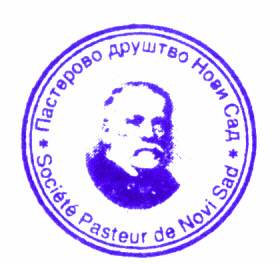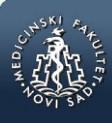md-medicaldata
Main menu:
- Naslovna/Home
- Arhiva/Archive
- Godina 2024, Broj 2
- Godina 2024, Broj 1
- Godina 2023, Broj 3
- Godina 2023, Broj 1-2
- Godina 2022, Broj 3
- Godina 2022, Broj 1-2
- Godina 2021, Broj 3-4
- Godina 2021, Broj 2
- Godina 2021, Broj 1
- Godina 2020, Broj 4
- Godina 2020, Broj 3
- Godina 2020, Broj 2
- Godina 2020, Broj 1
- Godina 2019, Broj 3
- Godina 2019, Broj 2
- Godina 2019, Broj 1
- Godina 2018, Broj 4
- Godina 2018, Broj 3
- Godina 2018, Broj 2
- Godina 2018, Broj 1
- Godina 2017, Broj 4
- Godina 2017, Broj 3
- Godina 2017, Broj 2
- Godina 2017, Broj 1
- Godina 2016, Broj 4
- Godina 2016, Broj 3
- Godina 2016, Broj 2
- Godina 2016, Broj 1
- Godina 2015, Broj 4
- Godina 2015, Broj 3
- Godina 2015, Broj 2
- Godina 2015, Broj 1
- Godina 2014, Broj 4
- Godina 2014, Broj 3
- Godina 2014, Broj 2
- Godina 2014, Broj 1
- Godina 2013, Broj 4
- Godina 2013, Broj 3
- Godina 2013, Broj 2
- Godina 2013, Broj 1
- Godina 2012, Broj 4
- Godina 2012, Broj 3
- Godina 2012, Broj 2
- Godina 2012, Broj 1
- Godina 2011, Broj 4
- Godina 2011, Broj 3
- Godina 2011, Broj 2
- Godina 2011, Broj 1
- Godina 2010, Broj 4
- Godina 2010, Broj 3
- Godina 2010, Broj 2
- Godina 2010, Broj 1
- Godina 2009, Broj 4
- Godina 2009, Broj 3
- Godina 2009, Broj 2
- Godina 2009, Broj 1
- Supplement
- Galerija/Gallery
- Dešavanja/Events
- Uputstva/Instructions
- Redakcija/Redaction
- Izdavač/Publisher
- Pretplata /Subscriptions
- Saradnja/Cooperation
- Vesti/News
- Kontakt/Contact
 Pasterovo društvo
Pasterovo društvo
- Disclosure of Potential Conflicts of Interest
- WorldMedical Association Declaration of Helsinki Ethical Principles for Medical Research Involving Human Subjects
- Committee on publication Ethics
CIP - Каталогизација у публикацији
Народна библиотека Србије, Београд
61
MD : Medical Data : medicinska revija = medical review / glavni i odgovorni urednik Dušan Lalošević. - Vol. 1, no. 1 (2009)- . - Zemun : Udruženje za kulturu povezivanja Most Art Jugoslavija ; Novi Sad : Pasterovo društvo, 2009- (Beograd : Scripta Internacional). - 30 cm
Dostupno i na: http://www.md-medicaldata.com. - Tri puta godišnje.
ISSN 1821-1585 = MD. Medical Data
COBISS.SR-ID 158558988
RHEUMATOID ARTHRITIS AND GLUCOCORTICOIDS: FRAX- ASSISTED PREDICTION OF HIP FRACTURES
/
REUMATOIDNI ARTRITIS I GLUKOKORTIKOIDI: PREDVIĐANJE FRAKTURA KUKA UZ POMOĆ FRAX-A
Authors
Ivana Minaković1,2 , Jelena Zvekić-Svorcan1,3 , Tanja Janković1,3, Rastislava Krasnik1,4, Darko Mikić5,6
UDK: 616.71-007.234-085 The paper was received / Rad primljen: 23.10.2020. Accepted / Rad prihvaćen: 03.11.2020. Abstract Introduction: Glucocorticoids play an important role in the treatment of rheumatoid arthritis, but the use of glucocorticoids also increases the risk of osteoporosis and pathological fractures. The aim of this study was to assess and compare the risk of hip fractures in patients with rheumatoid arthritis who use and patients who do not use glucocorticoid therapy, using the FRAX algorithm for the Serbian population. Material and methods: This retrospective cross-sectional study included 75 postmenopausal women with rheumatoid arthritis treated at the Special Hospital for Rheumatic Diseases, Novi Sad. Data were collected from patients' medical records, while bone mineral density was measured by osteodensitometry. A FRAX score was calculated separately for each subject to assess the ten-year risk of hip fracture, using an algorithm with and without bone mineral density. Results: Of the 75 subjects included in the study, 53 used and 22 did not use glucocorticoid therapy. Subjects who used glucocorticoid therapy had statistically significantly lower bone mineral density of the femoral neck (0.77 vs 0.86), p = 0.003. In the group of women who used glucocorticoids 50.94% of women had a high risk of developing a hip fracture, while this percentage in the group of women who did not use glucocorticoids was 9.09%. The statistically significant difference in the distribution of high and low risk for hip fracture existed when the FRAX algorithm was used with bone mineral density, as well when the FRAX algorithm was used without bone mineral density. (p = 0.001) Conclusion: Subjects with rheumatoid arthritis who was using glucocorticoid therapy had a statistically significantly lower bone mineral density of the femoral neck compared to patients with rheumatoid arthritis who did not use glucocorticoids. In the group of subjects who were using glucocorticoids, there were statistically significantly more women at high risk for developing a hip fracture, whether FRAX scores were calculated with or without the inclusion of bone mineral density.
Keywords: Fracture risk; Hip fracture; FRAX; Bone mineral density; Glucocorticoid; Rheumatoid arthritis; Sažetak Rizik za frakturu; Fraktura kuka; FRAX; Mineralna koštana gusina; Glukokortikoidi; Reumatoidni artritis; References: PDF 01-Vol 12 No4 Minaković I. et al
1University of Novi Sad, Faculty of Medicine, Novi Sad, Serbia
2Health Center Novi Sad, Novi Sad, Serbia
3Special Hospital for Rheumatic Diseases, Novi Sad, Serbia
4Institute of Child and Youth Health Care of Vojvodina, Novi Sad
5University of Defence, Medical Faculty of the Military Medical Academy
6Pathology and Forensic Medicine Institute, Belgrade, Serbia
615.356.065
Correspondence to:
Ivana Minaković,
University of Novi Sad, Faculty of Medicine,
Hajduk Veljkova 3, 21000 Novi Sad, Serbia,
Phone number: +381669246406,
e-mail: ivana.minakovic@uns.ac.rs
Uvod: Glukokortikoidi imaju važnu ulogu u lečenju reumatoidnog artritisa, ali upotreba glukokortikoida povećava rizik za nastanak osteoporoze i patoloških fraktura. Cilj ove studije bio je da se proceni i uporedi rizik za nastanak preloma kuka kod pacijenata sa reumatoidnim artritisom koji koriste i pacijenata koji ne koriste glukokortikoidnu terapiju, uz pomoć FRAX algoritma za srpsku populaciju. Materijal i metode: U ovu retrospektivnu studiju preseka uključeno je 75 postmenopauzalnih žena obolelih od reumatoidnog artritisa lečenih u Specijalnoj bolnici za reumatske bolesti, Novi Sad. Podaci su prikupljeni iz medicinskog kartona pacijentkinja, dok je mineralna koštana gustina merena osteodenzitometrijom. Za svaku ispitanicu je posebno izračunat FRAX skor za procenu desetogodišnjeg rizika za prelom kuka, koristeći algoritam sa i bez mineralne koštane gustine. Rezultati: Od 75 ispitanice koje su bile uključene u studiju, 53 su koristile, a 22 nisu koristile glukokortikoidnu terapiju. Ispitanice koje su koristile glukokortikoidnu terapiju imale su statistički značajno nižu mineralnu koštanu gustinu vrata butne kosti (0,77 vs 0,86), p=0,003. Visok rizik za nastanak frakture kuka u grupi žena koje su koristile glukokortikoide imalo je 50,94% žena, dok je ovaj procenat u grupi žena koje nisu koristile glukokortikoide iznosio 9,09%. Statistički značajna razlika u distribuciji visokog i niskog rizika za nastanak frakture kuka postojala je i pri korišćenju FRAX algoritma sa i FRAX algoritma bez mineralne koštane gustine. (p=0,001) Zaključak: Ispitanice sa reumatoidnim artritisom koje koriste glukokortikoidnu terapiju imaju statististički značajno nižu mineralnu koštanu gustinu na vratu butne kosti u odnosu na pacijentkinje sa reumatoidnim artritisom koje ne koriste glukokortikoide. U grupi ispitanica koje koriste glukokortikoide bilo je statistički značajno više žena sa visokim rizikom za nastanak frakture kuka, bilo da su FRAX skorovi računati sa ili bez uključivanja mineralne koštane gustine.
Ključne reči:
 Medicinski fakultet
Medicinski fakultet